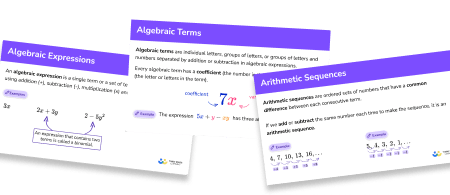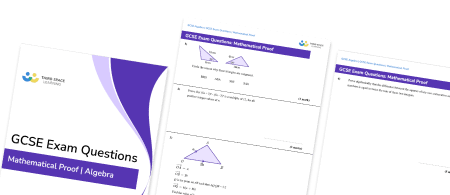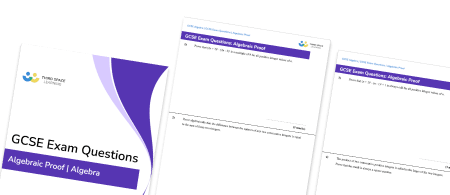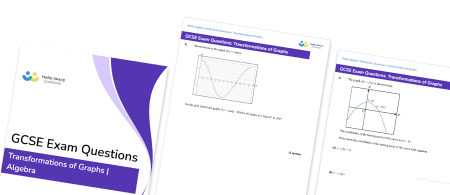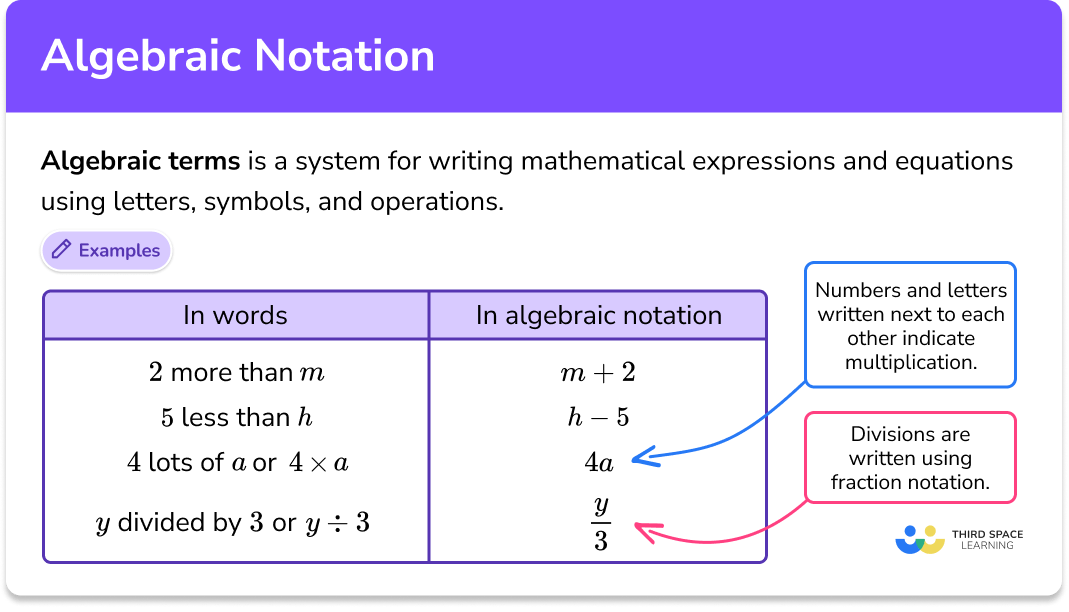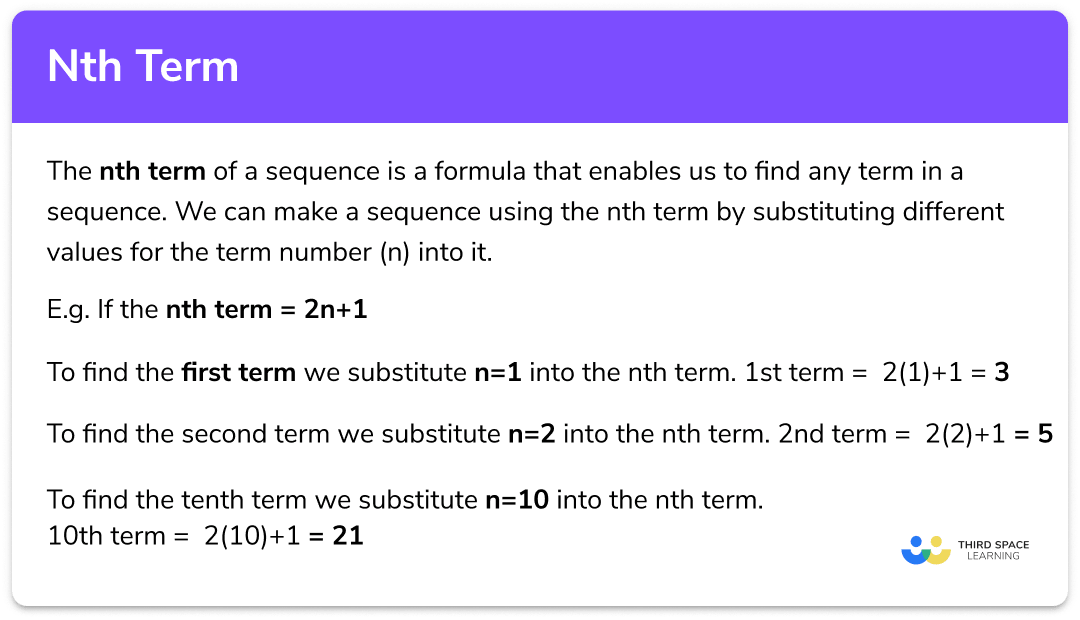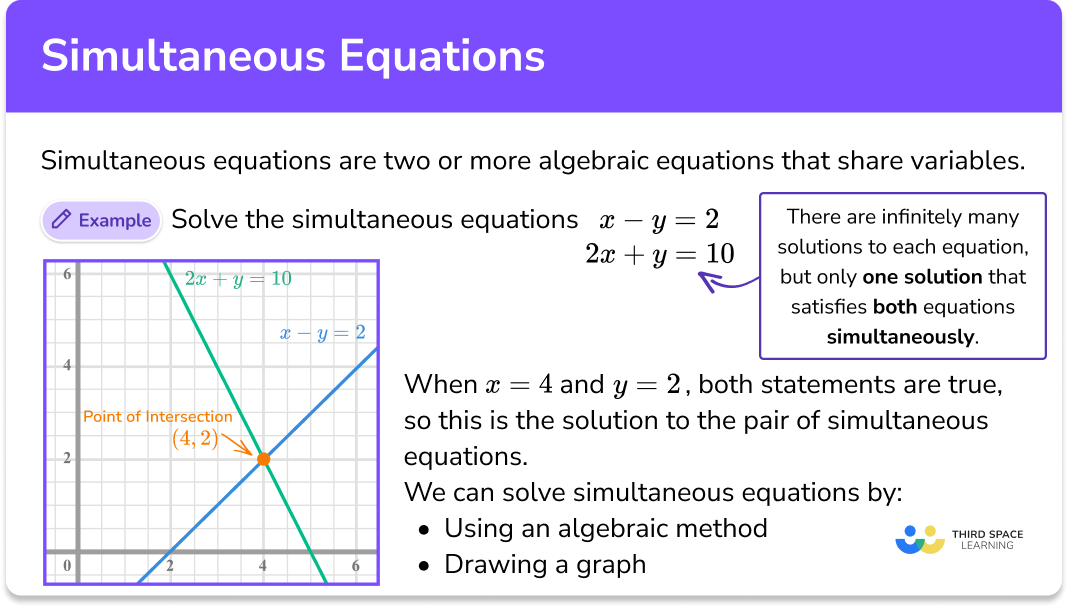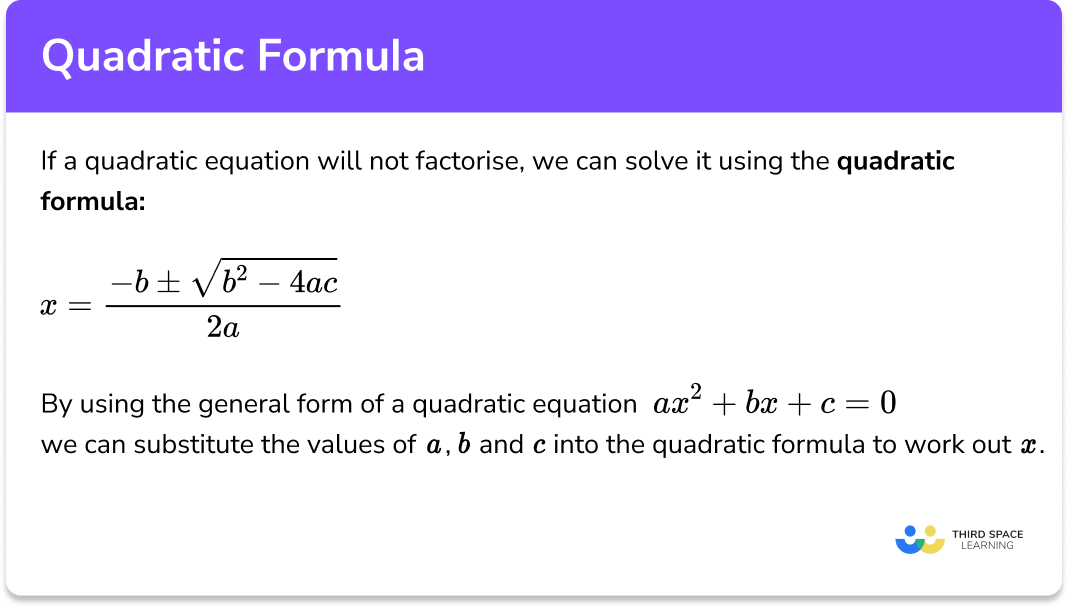FREE DOWNLOAD
Quadratic Equations Worksheet

Help your students prepare for their Maths GCSE with this free quadratic equations worksheet of 33 questions and answers
- Section 1 of the quadratic equations worksheet contains 20+ skills-based quadratic equations questions, in 3 groups to support differentiation
- Section 2 contains 3 applied questions with a mix of worded problems and deeper problem solving questions
- Section 3 contains 3 foundation and higher level GCSE exam style questions to help practise a variety of methods for solving quadratic equations
- Answers and a mark scheme for all quadratic equations questions are provided
- Questions follow variation theory with plenty of opportunities for students to work independently at their own level
- All questions created by fully qualified expert secondary maths teachers
- Suitable for GCSE maths revision for AQA, OCR and Edexcel exam boards
Quadratic equations at a glance
Quadratic equations contain variables that are raised to a power no higher than two. These can be solved using a variety of methods and there are usually two solutions.
If there is a single squared variable in the quadratic equation it can be solved by rearranging the equation to put the unknown on one side of the equals sign and all the other terms on the other side. If the equation is more complex and contains a squared term and the linear term we can use a variety of methods to solve it.
One method is factorising quadratics. After rearranging the equation so that the right hand side is equal to 0, the quadratic expression on the left hand side of the equals sign is factorised so that it is written as a product of two factors. Then each factor is considered in turn to be equal to zero and the solution is found.
Another method we can use to solve quadratic equations is using the quadratic formula. Here the coefficients of the different terms are substituted into the formula and the solutions are calculated. The solutions can be left as surds (with square roots), or written as decimals as required. We can work out the number of solutions a quadratic equation has by using the discriminant.
Completing the square can also be used to solve a quadratic equation; this method can help to identify the turning points of the quadratic graph produced from the equation.
Looking forward, students can progress with more solving equations worksheets and to additional algebra worksheets, for example a factorising worksheet, or a simultaneous equations worksheet.

For more teaching and learning support on Algebra our GCSE maths lessons provide step by step support for all GCSE maths concepts.
Do you have students who need additional support?
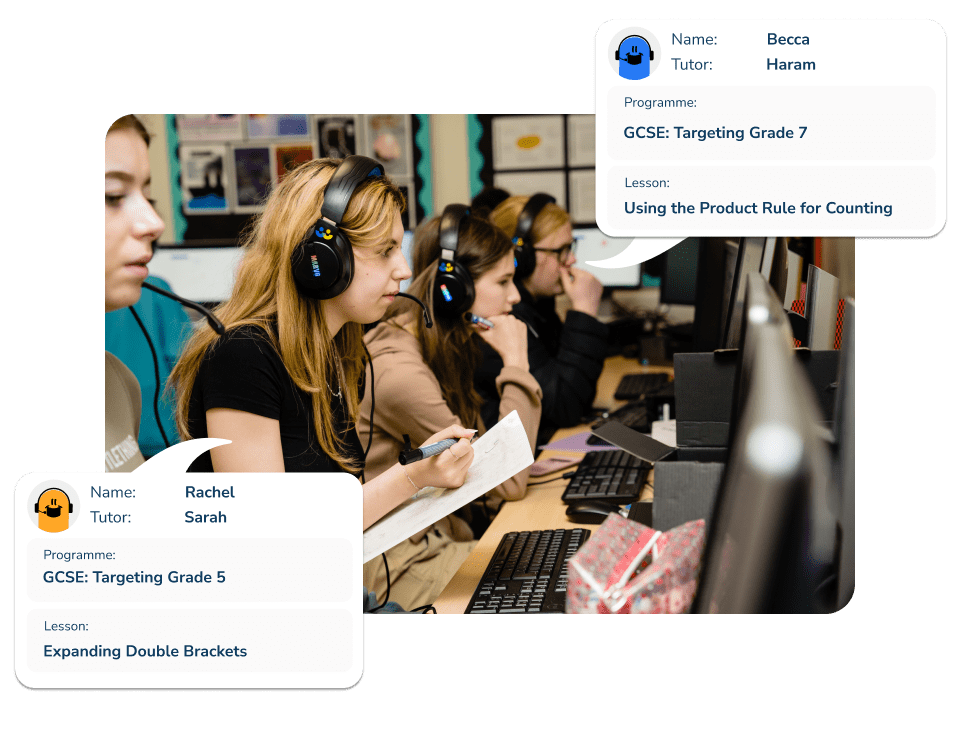
With Third Space Learning's secondary maths tutoring programmes, students in Year 7-11 receive regular one to one maths tutoring to address gaps, build confidence and boost progress.
"My confidence in the tutoring is high. We've had some phenomenal results. I even had one girl get a Grade 8 this year; she came to every tutoring session."
Stacey Atkins, Maths Director, Outwood Grange Academies Trust

